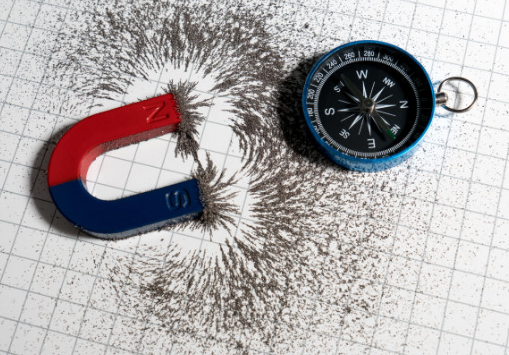The term “Curie temperature (Tc)” or “Curie point” gets frequently mentioned when discussing magnets and magnetic properties. The Curie temperature relates to the maximum temperature a material can reach before losing its magnetic properties. On reaching a magnetic material’s Curie temperature, the spontaneous magnetisation in the material drops to zero. At this point, the material is no longer a ferromagnetic material, instead becoming a paramagnetic material. This temperature marker is named after French physicist Pierre Curie (1859-1906), who, in 1895, discovered the laws that link changes in magnetic properties to temperature.
Explaining the difference between ferromagnetic and paramagnetic materials begins by returning to original creation of the magnetic force in a material. A material’s magnetic moment (which is a dipole moment within in atom originating from the spin and angular momentum of electrons) determines the force of magnetism. Different materials have unique structures of intrinsic magnetic moments and the alignment of these intrinsic magnetic moments is dependent on temperature. Magnets Reaching the Curie Temperature
On reaching the Curie temperature, a magnetic material reaches a critical point when the intrinsic magnetic moments within change direction.
A material is only magnetic on alignment of the magnetic moments in a specific orientation. Induced magnetism occurs when a collection of disordered magnetic moments are forcibly aligned in an applied magnetic field. When magnetic materials reach the Curie temperature, the alignment of magnetic moments becomes forcibly disordered. Therefore, as the operating temperature increases, and moves towards the material’s Curie temperature, the magnetic strength of a material weakens due to the moments shifting out of alignment. Generally, magnets are weaker when exposed to higher temperatures.
The wide range of magnetic materials have different Curie temperatures and, therefore, maximum operating temperatures. Curie Point Importance for Applications
Knowing the maximum operating temperature is one of several key factors under consideration when selecting a magnet for a specific application. Selecting a magnet with the optimum magnet field at room temperature is pointless if the actual operating temperature is much higher. Indeed, the operating temperature may be past the magnet’s Curie temperature, resulting in demagnetisation.
Temperature Limits for Magnets
AlNiCo (aluminium, nickel and cobalt) magnets tolerate the highest maximum operating temperatures of between 450-900°C. Samarium cobalt (SmCo) magnets, a type of powerful rare earth magnet, maintain magnetic performance in temperature between 250-350°C. Standard neodymium rare earth magnets (NdFeB) perform less effectively in higher temperature environments, with a maximum operating temperature of 80°C. Special high-temperature neodymium magnets maintain magnetic performance in temperatures from 140-200°C. The most commonly used magnet material in the world, ceramic ferrite, has a maximum operating temperature of up to 300°C.
On reviewing a specific application, our magnet engineers consider a wide range of variables including the relative magnetic strength at the given operating temperature.
Source:https://www.bunting-berkhamsted.com/magnets-and-the-curie-temperature/

 English
English

